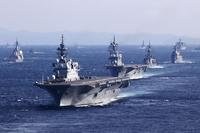It's a scene being replayed all over Iraq. American soldiers stumble upon a mysterious liquid or powder. The material is tested - and it's shown to be a nerve agent, or mustard gas. Embedded reporters and military flacks rush to tell the world that, at last, they've found the "smoking gun" that proves Saddam had banned weapons all along.
And then, a few hours later, further analysis shows that the whole thing was just a false alarm. The sample has to be sent to a lab, where a third and final determination can be made about whether or not the material is toxic.
What's going on here? Why do these "false positives" - as they're called in weapons inspectorese - keep popping up? Why are these tests so consistently inconsistent?
Check out my Tech Central Station story for answers.
THERE'S MORE: "Nerve agents like VX and sarin gas are scary terrorist threats, but a top federal official is more worried about chemicals that travel the nation's highways every day," the Associated Press says. "For instance, toxic industrial chemicals such as chlorine, phosgene and hydrogen cyanide are readily available. These are among the earliest chemical weapons and were used by troops in World War I. Today, they are commonly used in commercial manufacturing, and experts believe they could easily be used for terrorism. "
CHEMICAL "SMOKING GUNS" FLAME OUT -- WHY?
© Copyright 2024 Military.com. All rights reserved. This article may not be republished, rebroadcast, rewritten or otherwise distributed without written permission. To reprint or license this article or any content from Military.com, please submit your request here.








